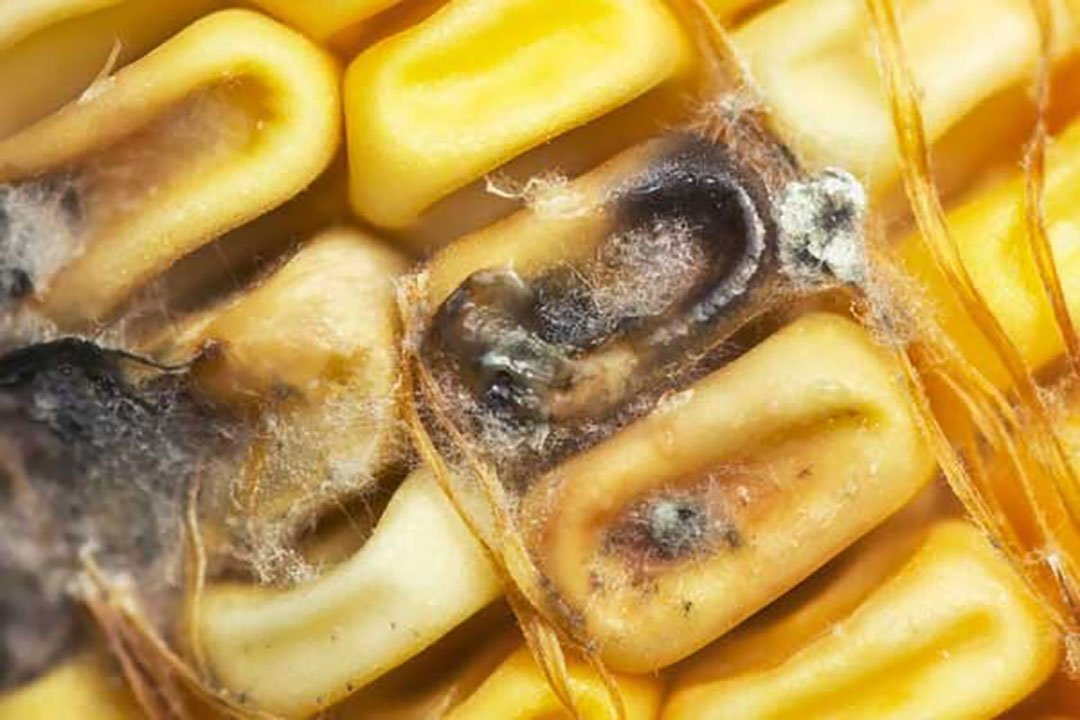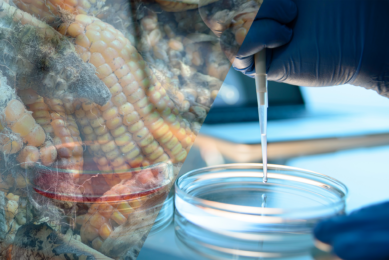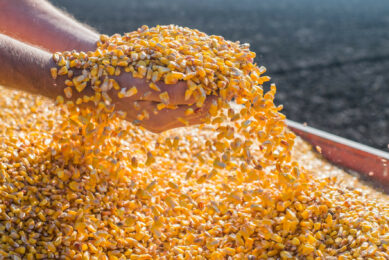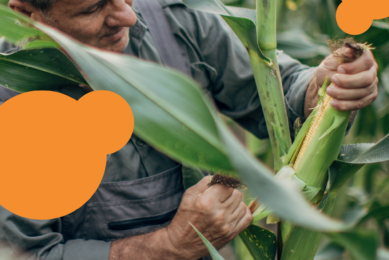Gilts are more sensitive to Beauvericin than sows

Beauvericin is a Fusarium mycotoxin known for its antiviral, antibacterial, anti-inflammatory, and anticancer properties, but it also causes oxidative stress and cell death.
Although these biological activities are mainly interesting for drug development, chronic animal exposure to such a chemical via feed will certainly influence performance and health status. Even though this mycotoxin is still ‘emerging’, its presence in feed materials has been known for many years.
Beauvericin (BEA) is commonly found as a co-contaminant in grains where other Fusarium mycotoxins such as Deoxynivalenol (DON) and Zearalenone (ZEA) are present. From the feedstuffs we evaluate at Schothorst Feed Research (SFR), BEA is often detected in corn and soy hulls at levels varying from 10 to 500 µg/kg. However, much higher contamination levels have been reported by others. As was published by All About Feed in 2010, a study performed in South Korea showed that 27% of feed ingredients were then contaminated with BEA at levels up to 1.8 mg/kg (almost 4 times higher than our findings). These levels can be extremely high, reaching circa 500 mg/kg in corn as was reported by Logrieco and others in the 1990s. Although these are extreme levels and they only occur occasionally, the constant presence of this mycotoxin is feedstuffs should be of concern to nutritionists and veterinarians.
![]() Mycotoxin Knowledge Centre:
Mycotoxin Knowledge Centre:
This interactive tool provides information on the impact on livestock health, an A-Z, plus regulations.
The effect of mycotoxins on the fertility of gilts and sows
In collaboration with Utrecht University, the Netherlands, we have been performing in vitro trials to evaluate the effect of several mycotoxins on the fertility of gilts and sows. For this, we apply a validated in vitro culture method of gametes that can be further in vitro fertilised for embryo production. In the first trials, we studied the effects of BEA on gametes harvested from sows and it was clear that sows can cope with the oxidative stress caused by exposure to BEA at levels up to 4 µg/mL. However, when performing another study with gametes collected from gilts, exposure to 5 times lower concentrations of BEA (0.8 µg/mL) resulted in impaired embryo development, i.e. 50% fewer embryos produced in vitro (Figure 1).
Figure 1 – Percentages of viable produced embryos from in vitro matured oocytes after exposure to different concentrations of BEA.
To understand the effects observed in these 2 studies, we simultaneously exposed gametes from gilts and sows to BEA, and the results confirmed our concerns. Gilt gametes were not able to mature, while 66% of the gametes from sows matured in vitro when they were exposed to 4 µg/mL BEA. It is known that the developmental potential of sow oocytes is higher than that of gilt oocytes because the antioxidant capacity of sow gametes is higher than in gilts. This difference in oxidative stress resistance may play a role in sensitivity to BEA.
 Mycotoxin testing and detection
Mycotoxin testing and detection
Learn more about the legal maximum limits of mycotoxins in food and feed ingredients around the world
BEA can accumulate in fat tissues
Due to the small number of studies on the exposure of farm animals to this mycotoxin it is difficult to compare plasma levels with the levels tested in our culture system. However, these levels were similar to those previously detected in the plasma from rats after oral exposure via feed.
Most importantly, in practice gilts will be subject to chronic exposure via feed and BEA can accumulate in fat tissues.
No data on adverse effects fo BEA in pig farms
There is currently no data on the adverse effects of BEA in pig farms and such analysis is difficult because dietary exposure consists of a mixture of various Fusarium mycotoxins including DON, ZEA, and Enniatins, among others. This is why our studies with cells draw attention to the risks of neglected mycotoxins such as BEA, indicating that special attention should be paid to diets offered to gilts that are contaminated with BEA.











